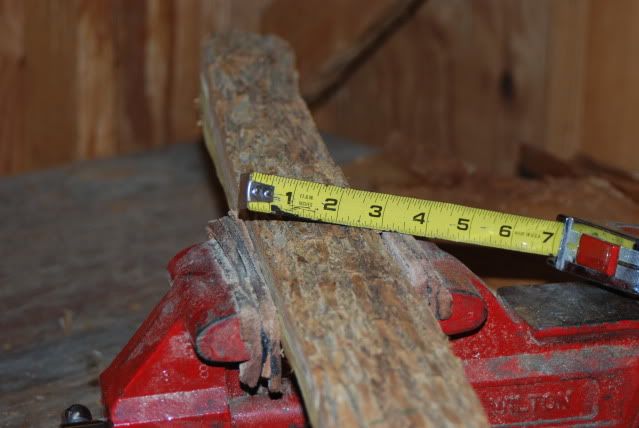Well, all this talk of swapping bows and rabbit hunting got me off my duff today...
There's a bunch of building going on here and some good input so, I thought I'd document my share too. Time for me to give a little back to the "BENCH".
Follow along on four attempts of mine to make shootable osage bows built with only simple hand tools. Anyone that has a drawknife, rasp & saw can do it. I'll try and explain the basics I use as I go along with this thread. SHOOT,,, I might even get someone to help me a bit.
I realize many of you in this section are more experienced than myself but, I hope those more experienced & others may learn something from how I do this building of selfbows.
Oh,,, Not sure how long this will take but should keep me out of trouble for awhile.....
DAY ONE; 10am to 2pm
I'll start off with 3 staves... the forth one not shown yet comes in in to play in just a bit. My plan was for 3 staves but when I realized I had all 4 quarters of this log, I decided to make it 4 bow staves and do the entire tree trunk.
The staves were hand cut with my buck saw, split with metal wedges into quarters and their ends were sealed with shellac over two years ago. They are 73" long osage orange staves and are around 5" to 3" across the back or bark side of each quarter stave.
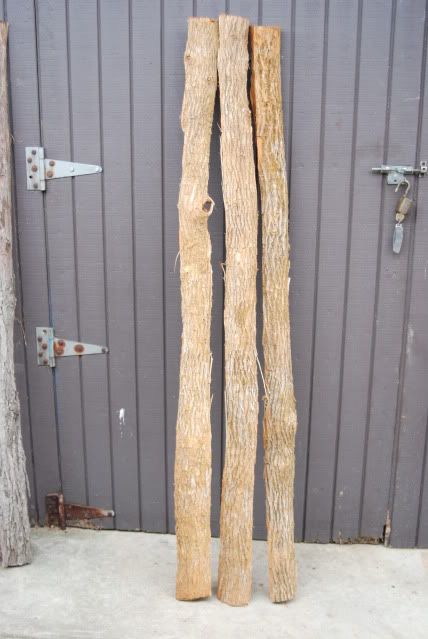
Here you can see the growth rings in the 1st 3 staves. The fourth staves rings were thinner and has a few waves in it. This side of the tree was growing against another tree if I recall correctly, making this staves rings a bit thinner.
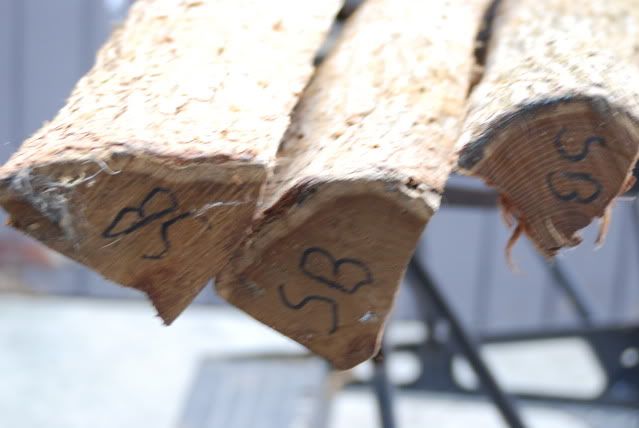
And, here are all four quarter staves. You can see where the knots and holes used to be on the inside of the tree where they are now split apart. Also, I believe this tree had maybe been in a fire at one time due to some of the black and damage in the wood. Maybe not, maybe just a weird or pithy vein and old bug holes grown over???
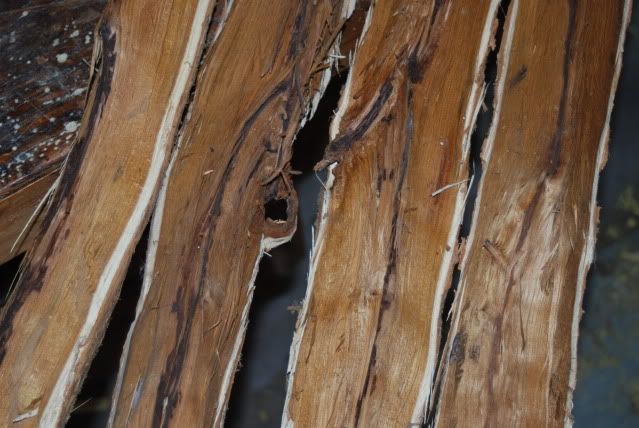
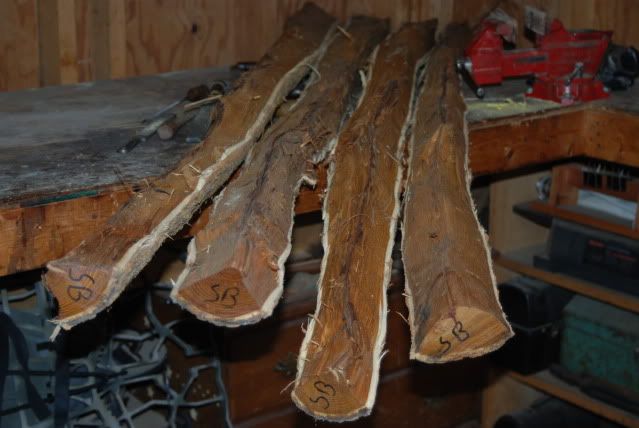
Here are some of the matching holes that were in the log along with the black or burnt looking wood inside of them??? Some of the knots, limb viens and holes you see here and above will be cut away and not in the end result. There's still alot of wood to come off these staves!
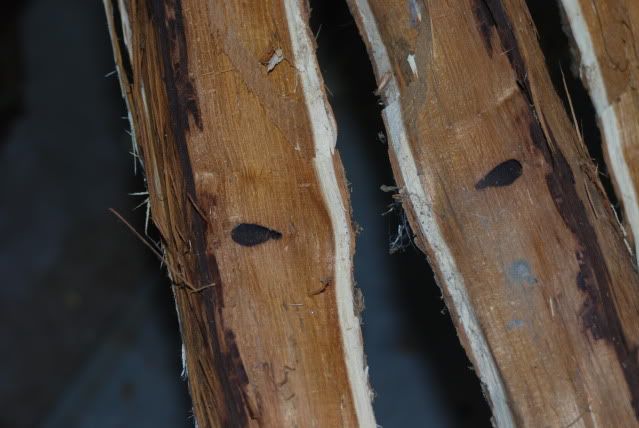
Okay, now clamp one stave on its side in the vise and get to work. At this point, the staves are pie shaped and I need to square them up a bit.
I trim the edges at the bark and whitewood (crust of the pie shaped stave) to square up the staves some. This effort helps keep the stave secure in the vise.
I finally clamp the stave in the vise, bark up and start ripping off the whitewood edge with a drawknife.
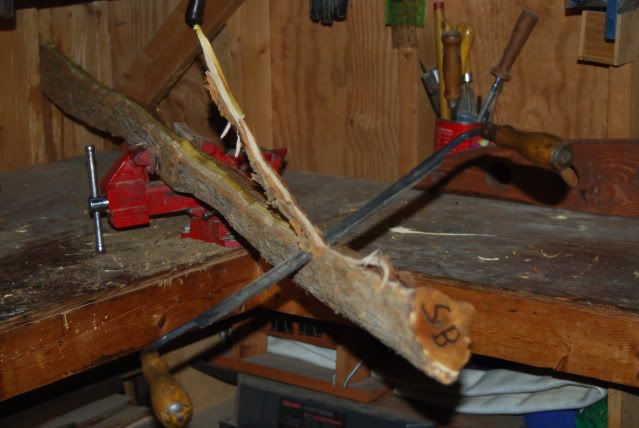
This effort above will also show you where the whitewood and heartwood meet. And, a more squared surface provides the vise something to hold on to while you work the stave.
Here you can see a squared off edge as it transitions from the bottom up,,, from bark to whitewood and then on to the heartwood. Note the darker oxidized heartwood on top. When my wood has aged to this color, I feel it is ready to reduce to a rough bow.
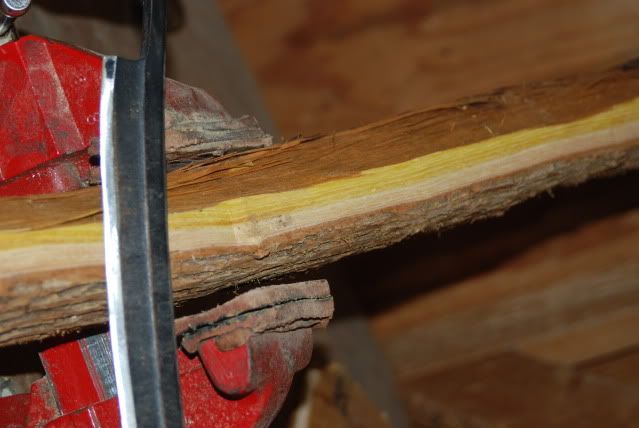
Squared off and clamped in the vise; we are ready to get serious with the drawknife!
To do this work of removing wood with a DK (drawknife), I always wear fingerless gloves or weight lifters gloves are another choice of mine. Gloves prevent blisters and blisters will slow you down. Or, stop your wood removal altogether!
